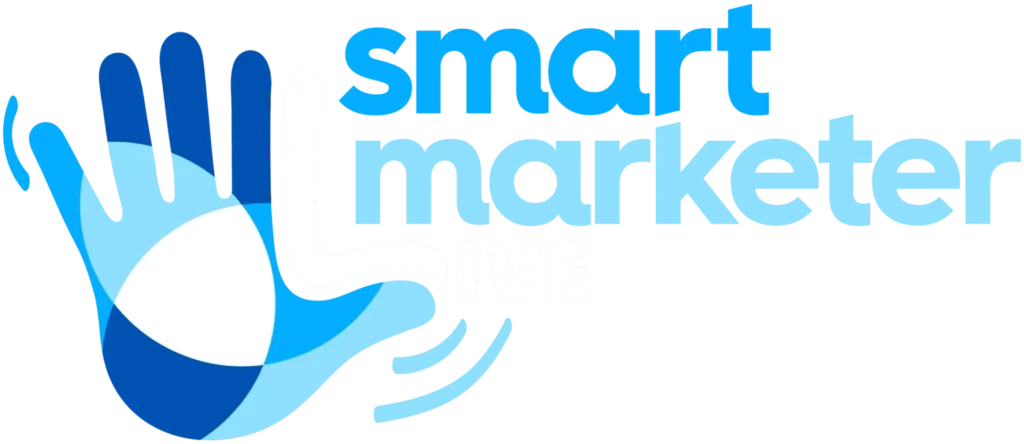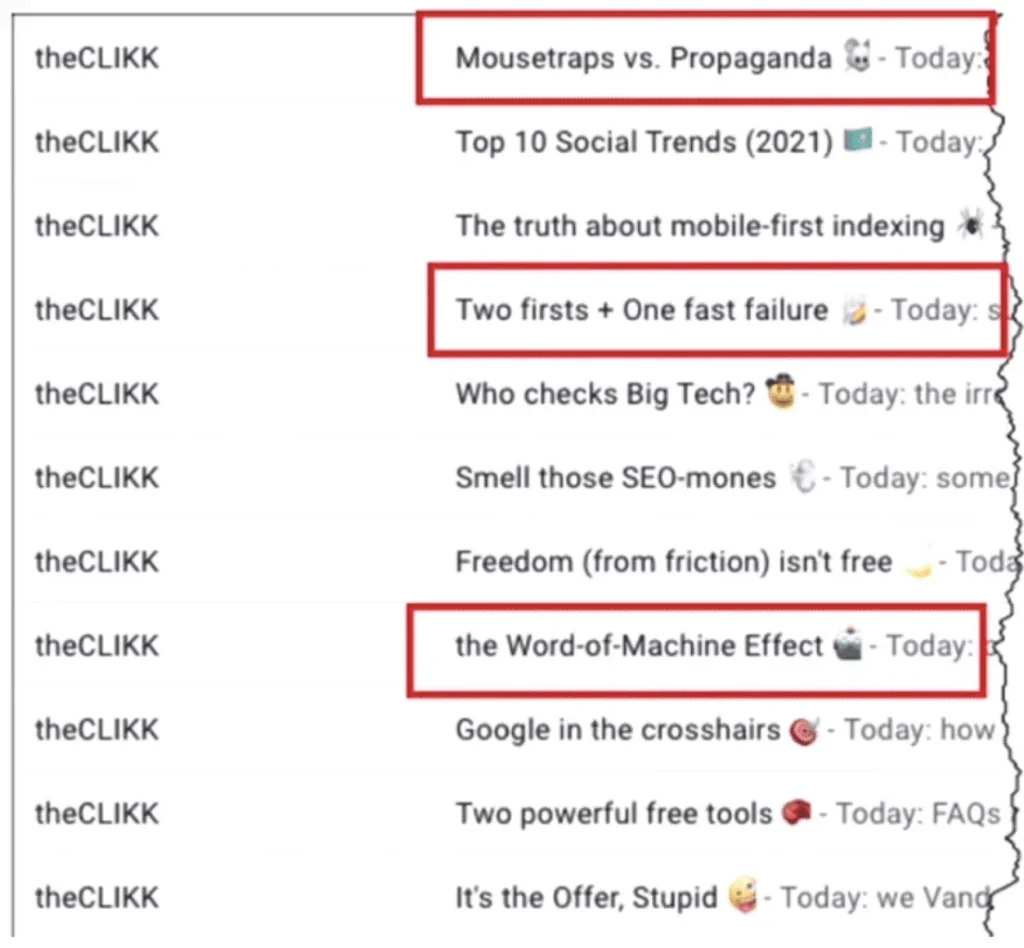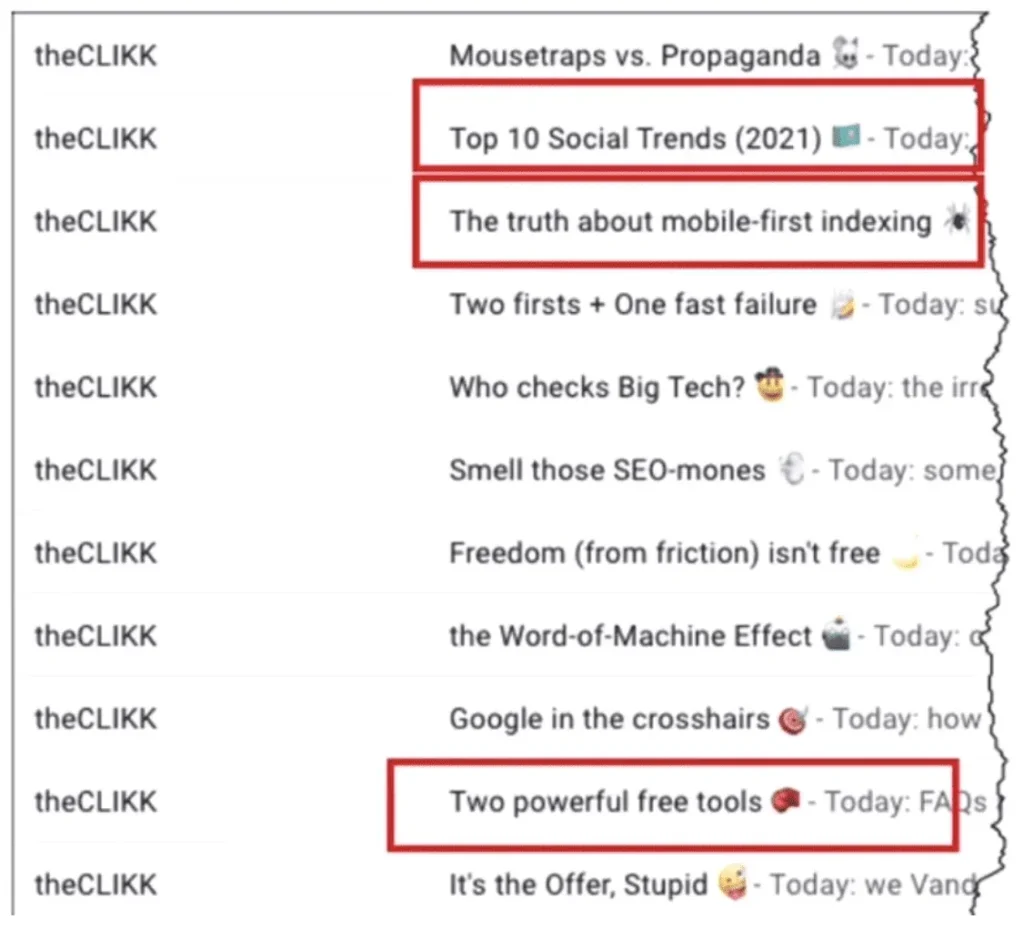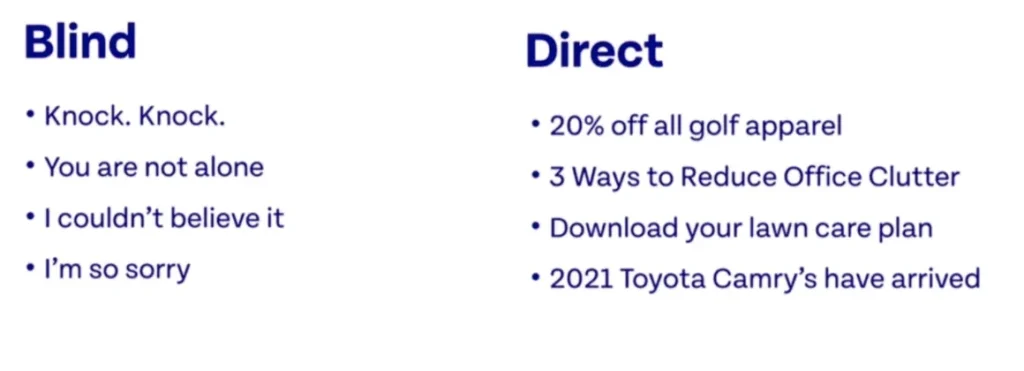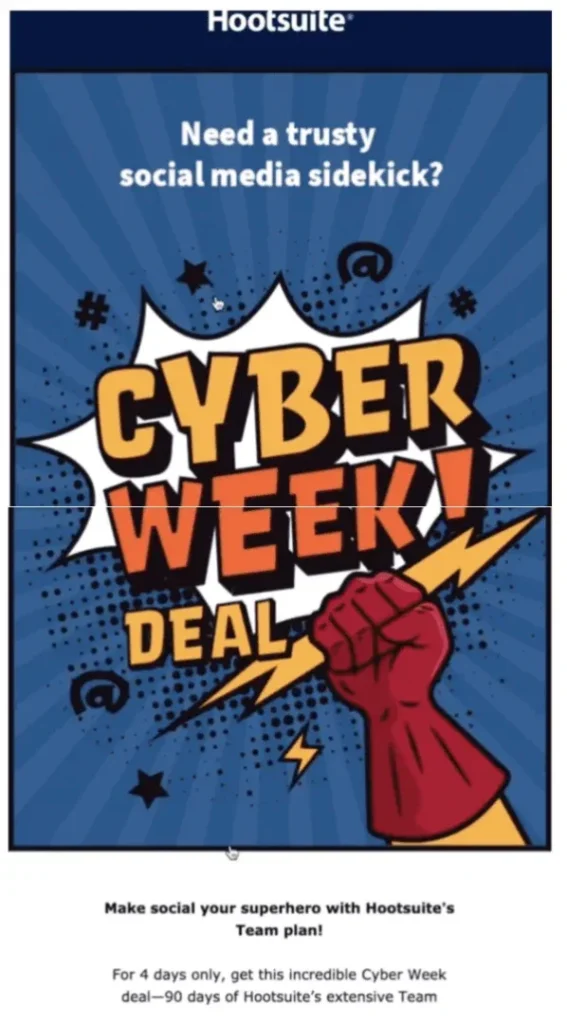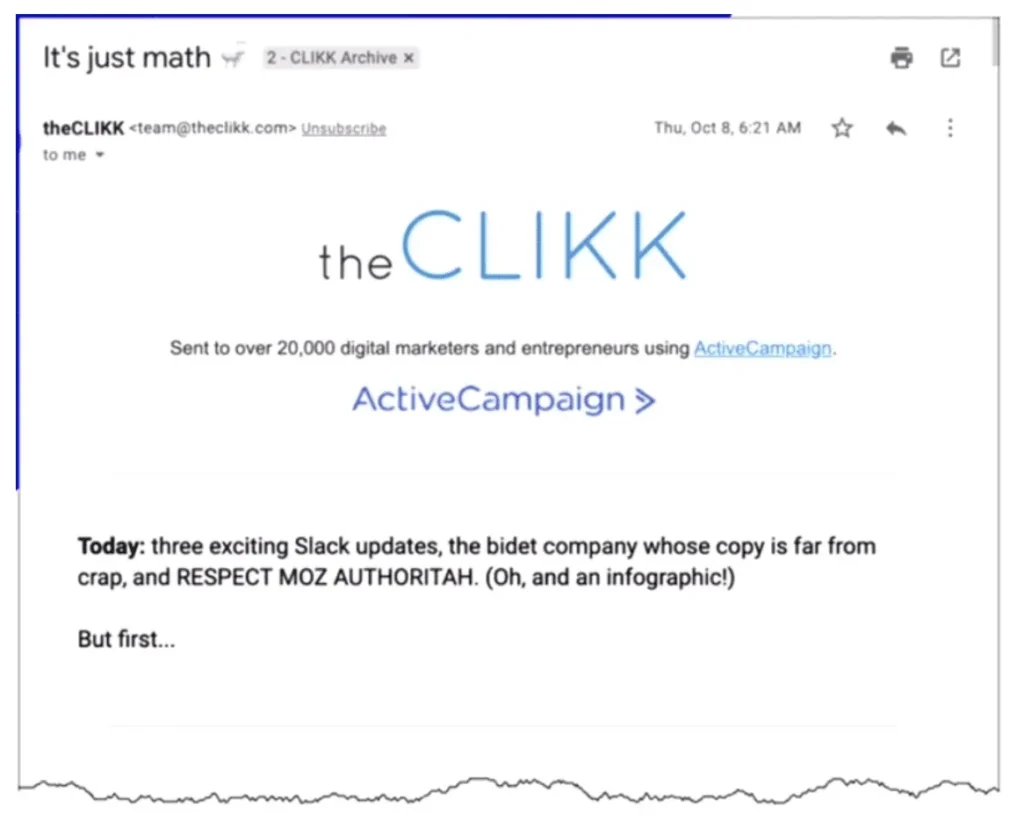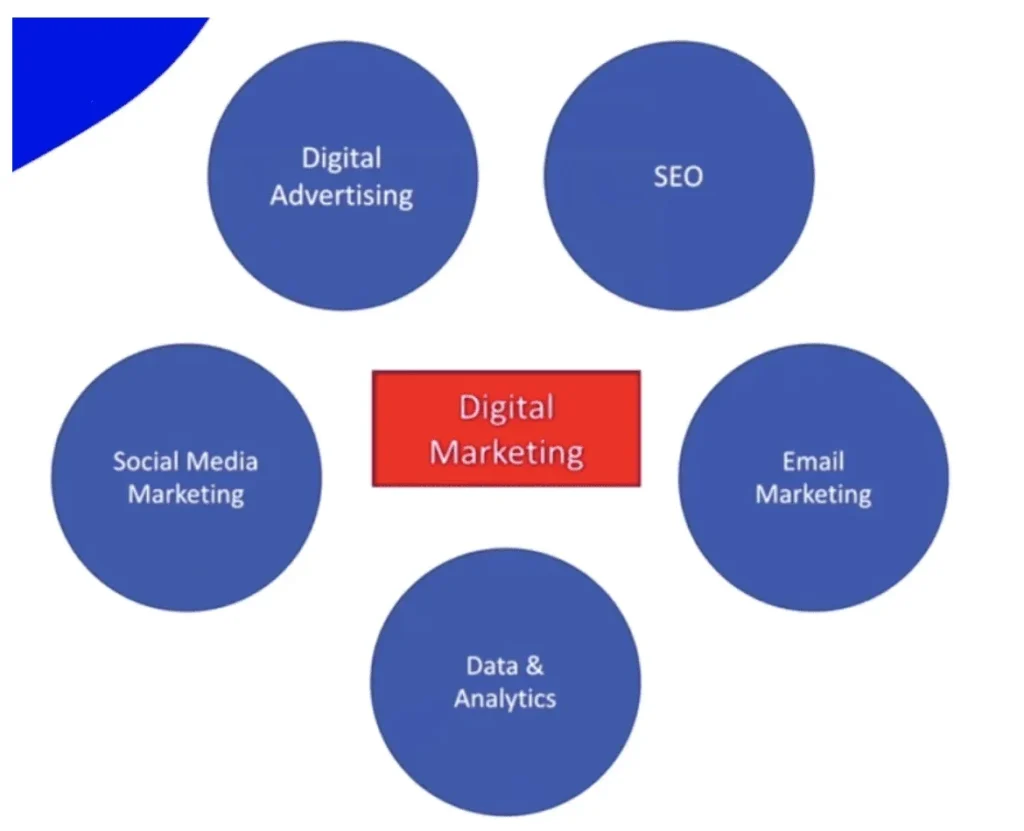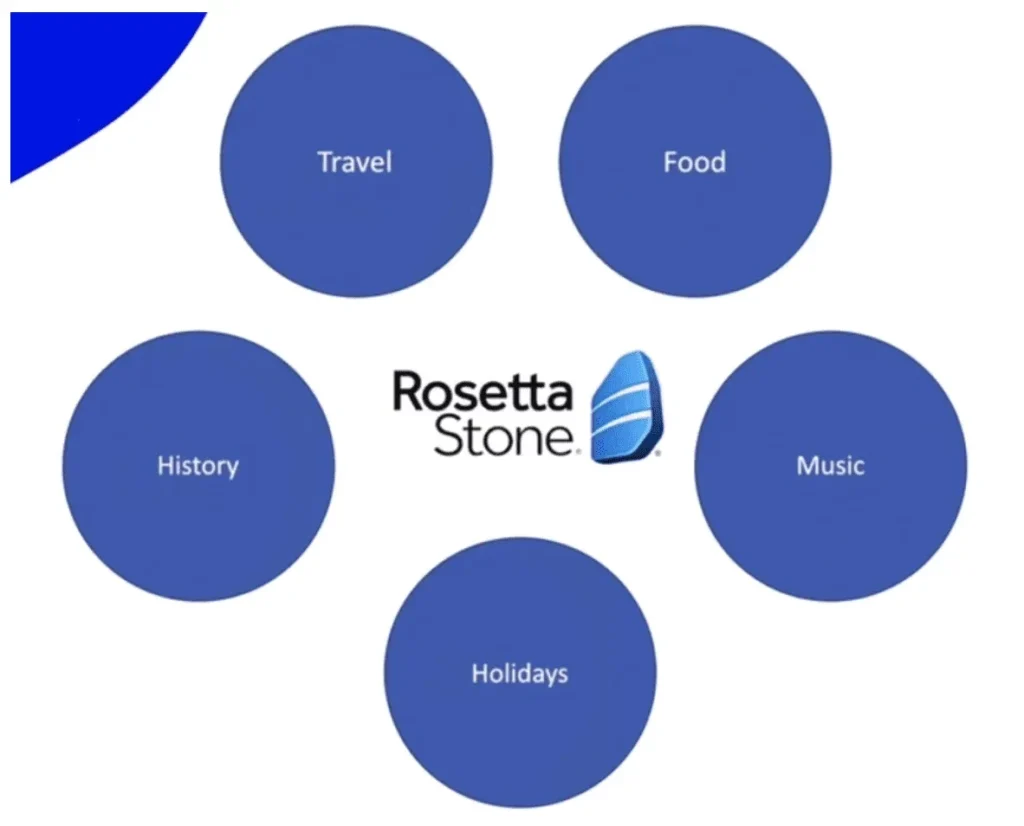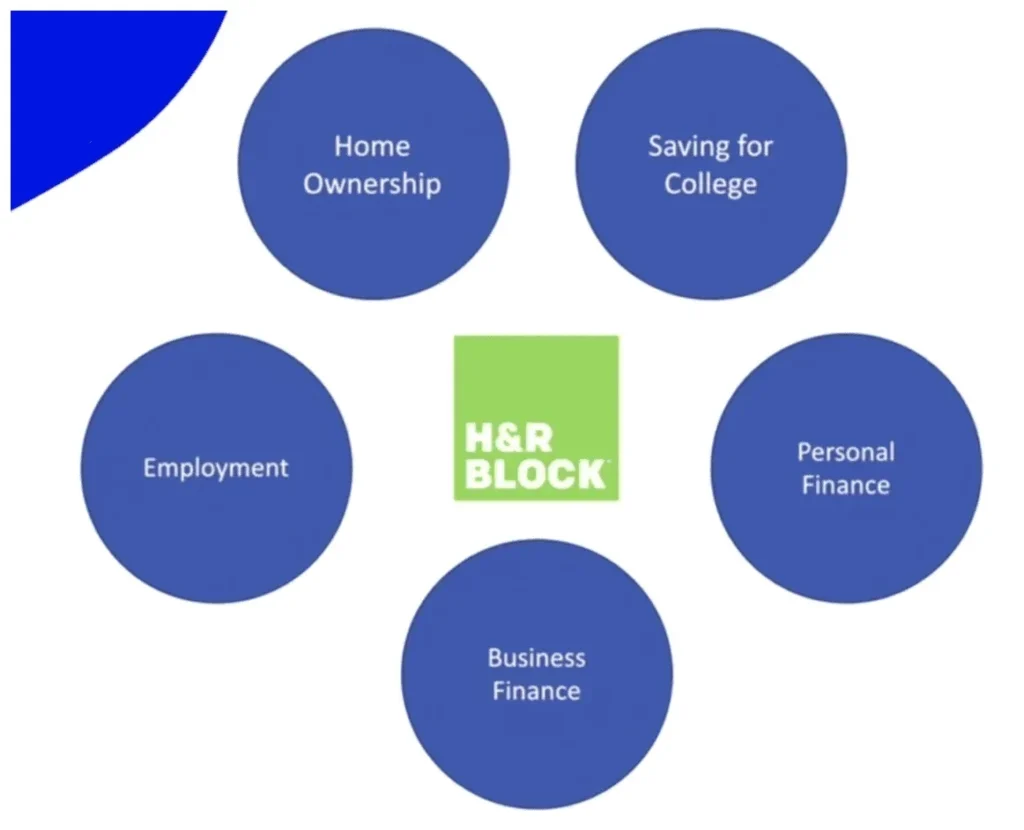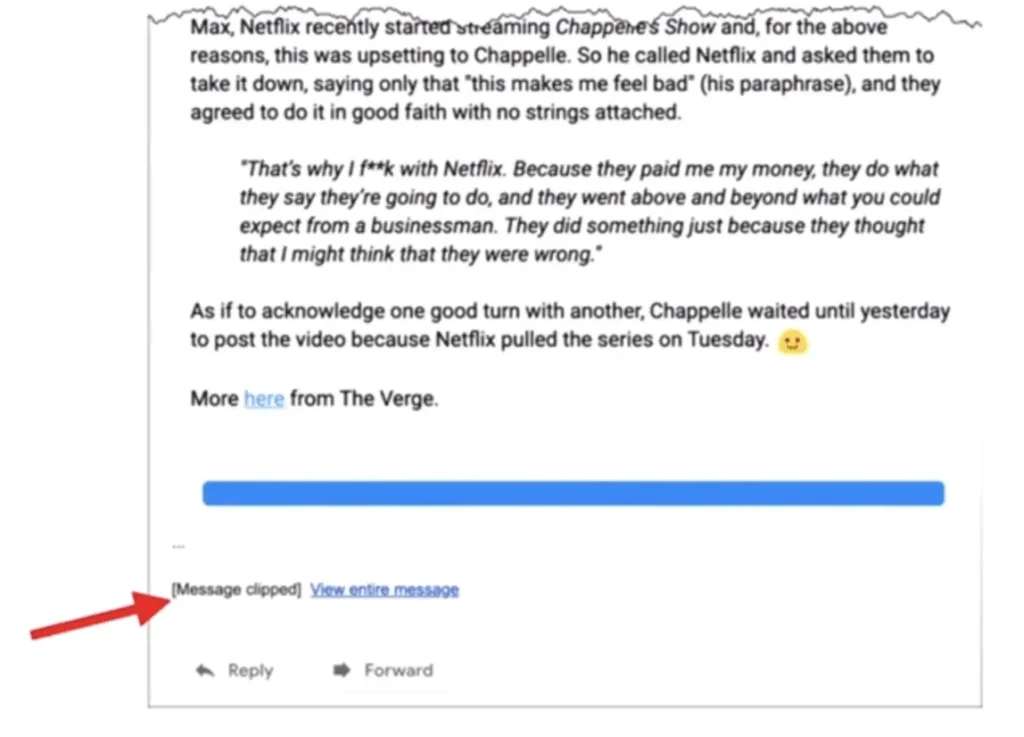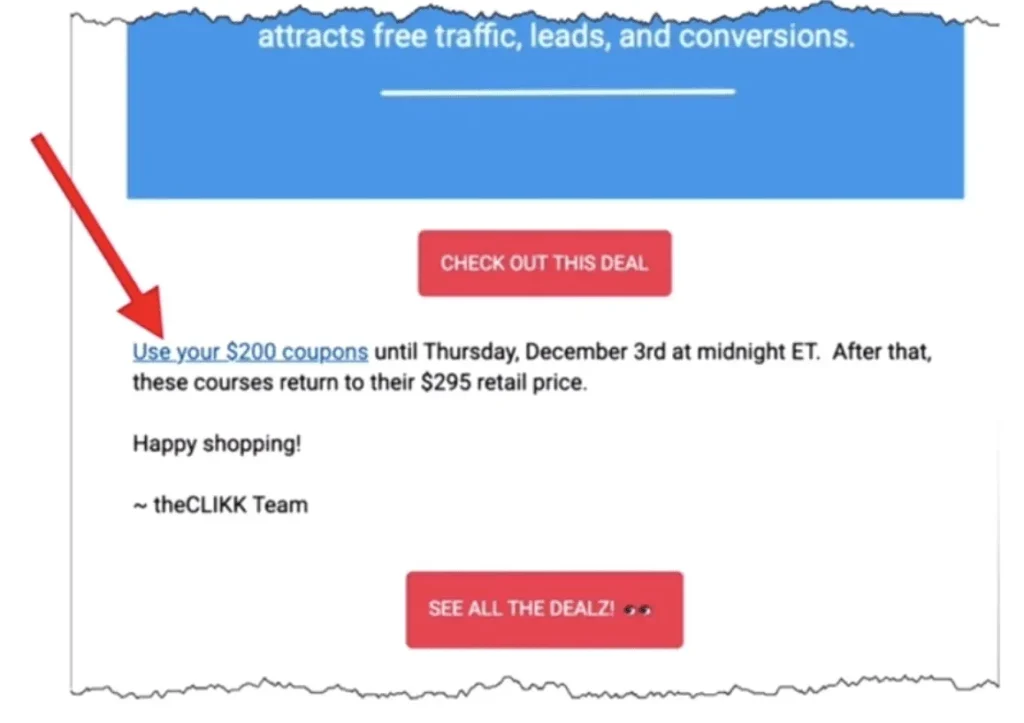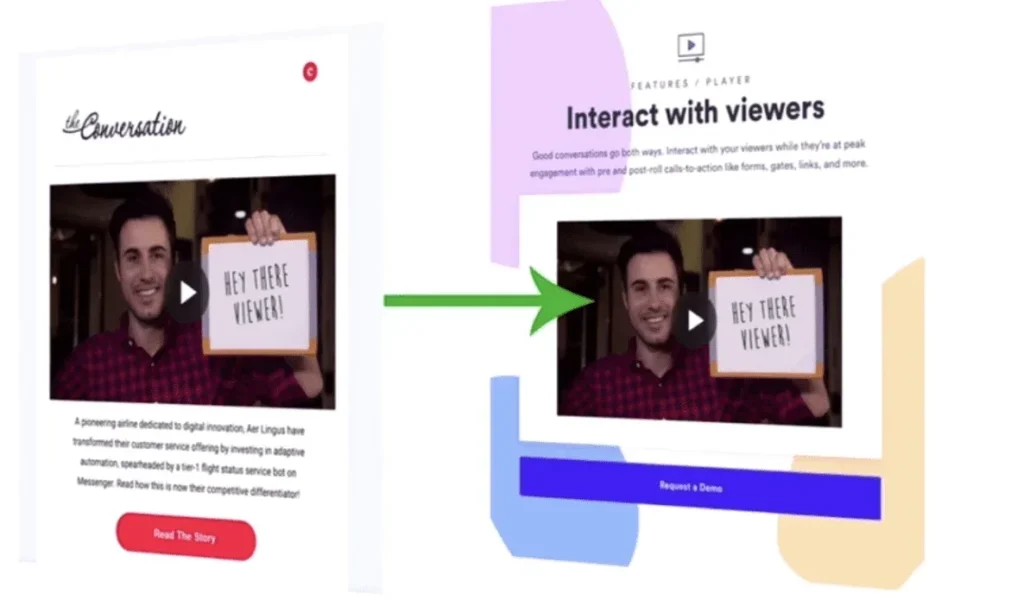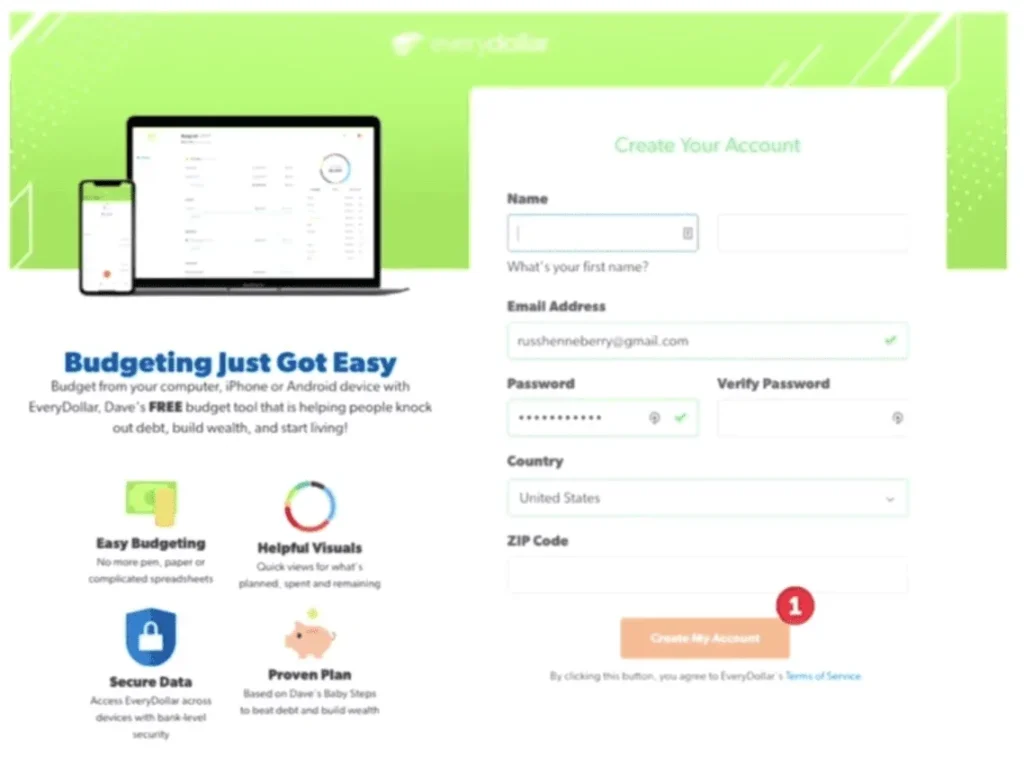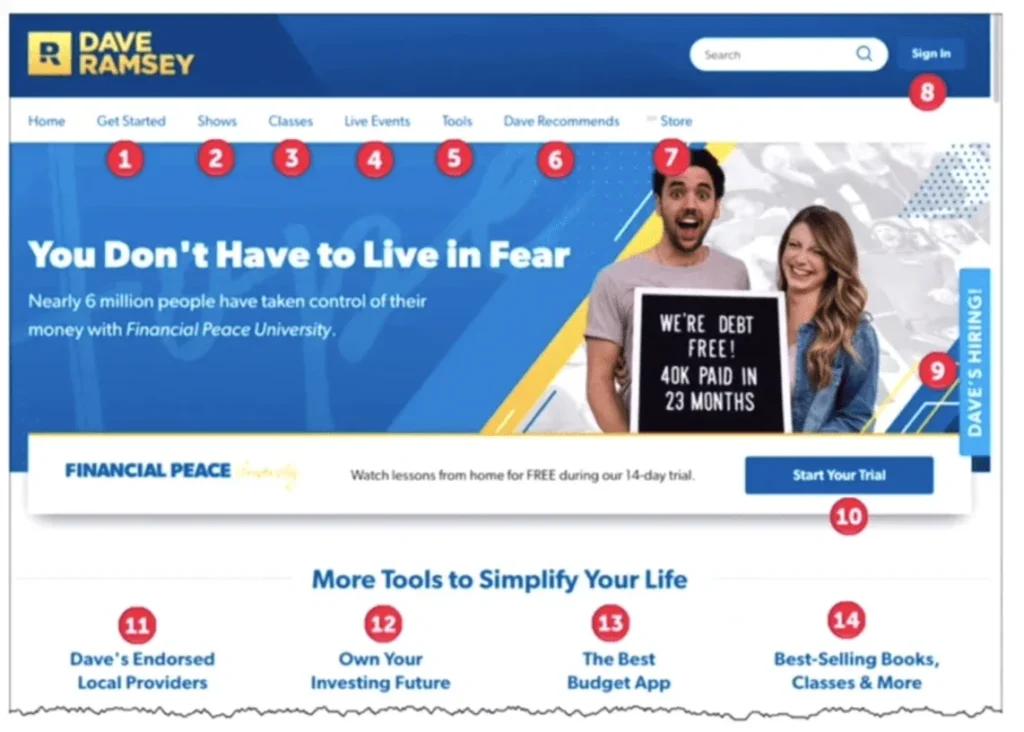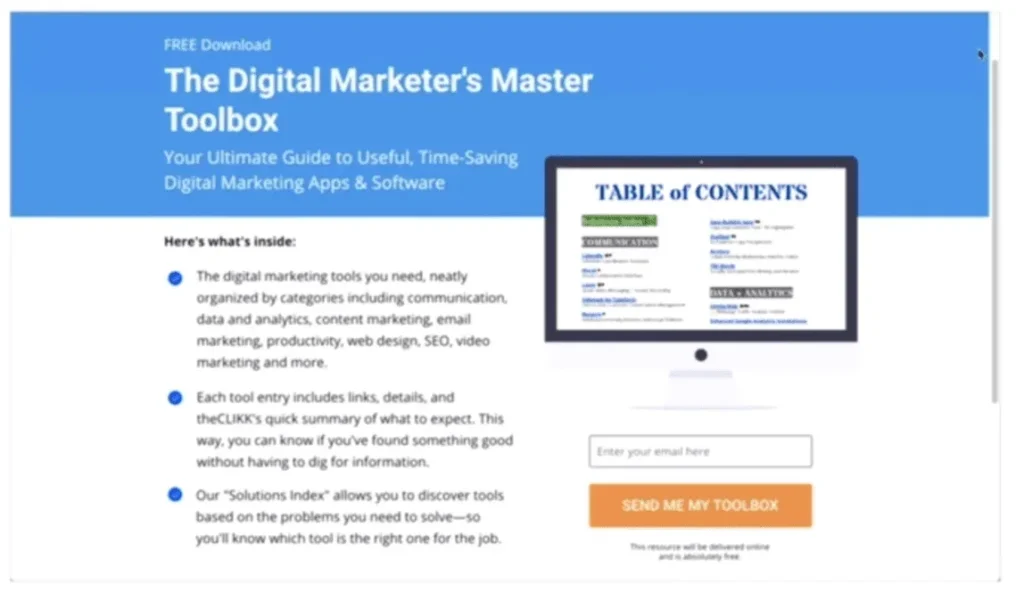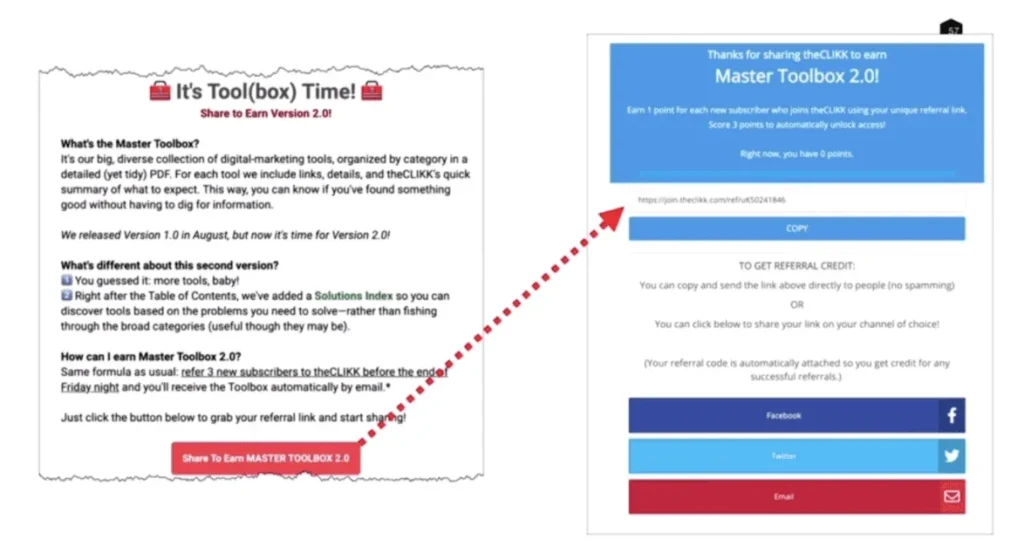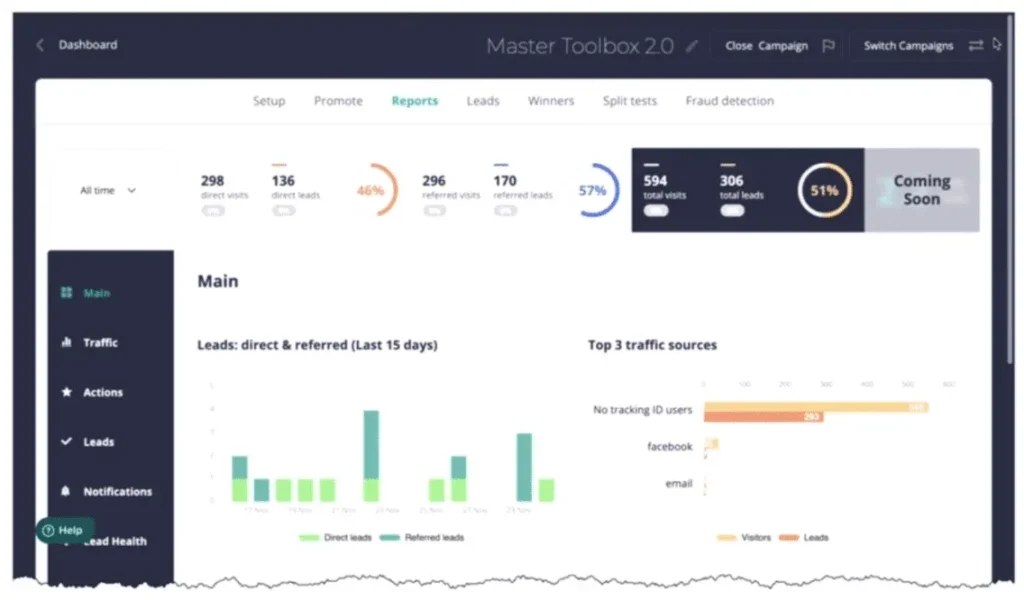What’s up, Smart Marketer! Russ Henneberry here from theCLIKK.
I’ve been doing email marketing for a looooong time, and we’ve had some great success with our newsletter at theCLIKK. So I thought I’d share 5 fairly easy things you can do to get better results out of your email marketing. Let’s jump right into it.
Tip #1: How to Increase Open Rates
I’ve got 2 strategies to help you here.
Open Rate Strategy #1: 2 Types of Subject Lines
It helps to think of subject lines in terms of 2 categories: blind and direct.
Blind subject lines don’t specify what the content is about. They can be really effective at increasing the open rate by piquing curiosity…but usually they come with a lower clickthrough rate, since some of the people who open the email won’t be qualified or interested in what you’re offering.
Here are some examples:
Direct subject lines are the opposite: they clearly reveal the email’s content in the subject line. You’ll usually get fewer opens as a result, but you’ll also get a higher CTR since the people who do open the email will be more qualified.
Here are some examples of direct subject lines:
Pretty simple, right? Use blind subject lines when you want more opens, and direct subject lines when you want more clicks. Here are some more examples from other industries:
Open Rate Strategy #2: 2 Types of Email Body Copy
Now let’s talk about the email body for a moment. You can group those into 2 buckets, as well: full-push emails and partial push emails.
In partial push emails, the full value or content is NOT delivered in the email itself. Instead, you require the person to click a link that goes to a landing page, blog post, product page, etc.
Here’s an example from Hootsuite:
The goal with partial push emails is usually to tease your landing page and give enough benefits to convince people to click on your link and learn more.
Full-push emails are the opposite: this is when you’re delivering the value within the body of the email itself.
A newsletter, like theCLIKK, is a great examples of a full-push email:
Now, this doesn’t mean full-push emails can’t have links. theCLIKK has all kinds of links in it. But the difference is, you don’t HAVE to click the links to get the primary value of the email. Because that value is delivered in the email itself.
Now, at this point you may be thinking: this stuff is related to the body of the email. So, what does this have to do with open rates?
Great question.
If all you ever do is send out partial push emails that link out to a product page, your audience is going to get burnt out and stop opening your emails over time. Nobody likes to be blasted with “Sale, Sale, Sale” over and over.
That’s where full-push emails come into play. Sending out valuable emails on a regular basis trains people to expect your emails to contain something of value. And that makes them more likely to open ALL your emails in the future (yes, even the partial push emails).
Make sense?
Great.
But there’s one more problem you might have, which is: how do you come up with relevant content to talk about in your full-push emails?
It’s pretty simple for a newsletter like theCLIKK, since there are all kinds of relevant topics that we can write about that are relevant to digital marketing:
- SEO
- Social media
- Social media marketing
- Email marketing
- Data & analytics
One way to display this is through a content map, like this:
But you can create a topic map on anything. Pretend you’re Rosetta Stone, for instance. You have a program that helps people learn languages.
What are some content areas that might be relevant to people who want to learn a new language?
Here’s what my topic map for Rosetta Stone might look like:
See how that works? They don’t have to talk about language learning all the time. They can expand into related subjects that language learners are liable to be interested in.
Let’s do one more example. This time, let’s use a service that seems like it would hard to create interested content for—accounting:
People may not be thrilled to hear about the details of tax law, but people interested in accounting are liable to be interested in other financial topics too. So you can include these topics in your full-push emails to start delivering value in your emails and training people to want to open them.
Tip #2: How to Decrease SPAM Complaints
This boils down to deliverability. And SPAM complaints are the single most negative signal that decides whether your emails get delivered or not.
Here are some things you can do to reduce SPAM complaints and help keep your deliverability high:
- Don’t send broadcast email to people who didn’t opt-in. (This means NO buying and uploading bulk lists.)
- Don’t use blind subject lines exclusively.
- Deliver on the promise of a direct subject line in the body of the email.
- Test your emails for clipping.
Clipping is when gmail clips the end of your email, like this:
Why is clipping an issue? Because with no footer, people won’t have an easy way to unsubscribe. So most of them will just click the “SPAM” button to unsubscribe, rather than going through the process of viewing the entire message and scrolling to the bottom to hunt for an unsubscribe link.
Gmail gives you just 102 KB of data for your email. If you go over, that’s when they start clipping. The good news is that 102 KB doesn’t include images, since they’re being hosted by your email service.
I’ve even seen some newsletters put some of their text into image form in order to cut down on file size and avoid clipping.
Tip #3: How to Increase CTR
If you want more people to click through from your emails to your landing page, follow these best practices:
- Put at least 3 links in the email.
- Link all your images to the landing page.
- Use a combination of buttons and text links.
Basically, you want to make it as easy as possible for people to click. So give them plenty of opportunities.
Here’s one of our emails that uses both buttons and text links:
And here’s one last tip: If your landing page has a video, include a still image of the player and link it to the landing page.
People won’t be able to play the video in the email itself, but it will tell them there’s a video they can watch on the landing page. Here’s a good example:
Tip #4: How to Increase Opt-ins
Now let’s step back a bit and talk about how to get more people on your email list in the first place. To get email opt-ins, you need 3 things:
- A Lead Magnet. This is some form of valuable gated content that people have to opt-in for.
- A dedicated landing page (AKA squeeze page). Here’s a great example from HubSpot.
- Traffic.
Remember that your landing page should have only 1 call-to-action. Take this one from Dave Ramsey for example:
The only things you can do on this page are:
- Opt in.
- Leave.
That’s exactly what you want on a landing page.
Compare that to Dave’s homepage, which has at least 14 different options all competing for your attention:
On a homepage, this is fine. It’s what a homepage is supposed to do. But when you want opt-ins, make that the only focus of the page.
You might get only 2% of homepage visitors to opt in, but a good squeeze page can have a conversion rate as high as 70%.
Tip #5: How to Increase Viral Sharing
One of the most important metrics in email marketing is your cost per subscriber (or cost per lead). And given the cost of traffic these days, those costs can definitely add up.
But with some clever tactics designed to increase viral sharing, you can take those subscribers that you generate and multiply them. So for instance, if your cost per lead is $4, but you can get subscribers to share your content with 3 other friends, then your CPL just went down to $1 on average (since you got 3 additional leads at no extra cost for your $4 investment).
Make sense?
OK, so here’s how to implement it. First, you need to create a full-push email with lots of share-worthy value.
One way to do this is to create what I call a “Share Magnet.”
For example, here’s our landing page for something called The Digital Marketer’s Master Toolbox:
What we did was offer the same resource to people on our email list if they share it with their friends. Here’s what that looks like:
When you click the link in the email, you’re taken to a page where you can invite your friends to check out theCLIKK. If you get 3 people to sign up, you’ll get the tool for free.
Cool, huh?
By the way, we use a tool called UpViral to set these up:
In the timeframe of this dashboard, we got 170 extra leads for free—which helps grow our list without bloating our ad costs.
All right, that’s it from me! Put some of these tips into practice and let me know how they work for you.

